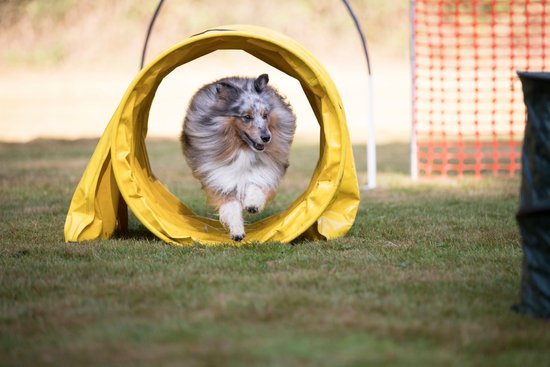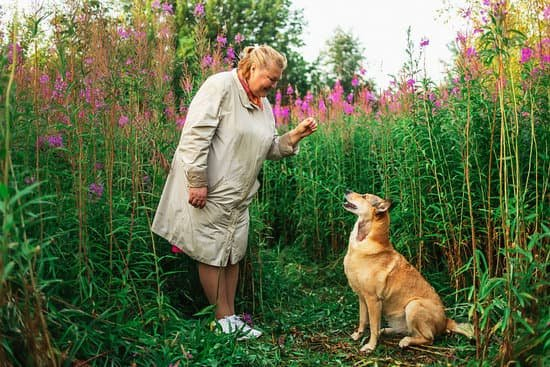Does your furry friend struggle with walking up ramps? Are you worried about their safety and well-being? If so, learning how to train your dog to walk up a ramp can be a game-changer. Whether your dog is dealing with mobility issues or simply needs some guidance, this training can make a real difference in their everyday life.
When it comes to training your dog to walk up a ramp, there are various benefits to consider. Not only does it provide physical assistance for dogs with mobility challenges, but it also promotes mental stimulation and confidence-building. Additionally, incorporating the use of ramps into your dog’s routine can enhance their overall quality of life by enabling easier access to different spaces and activities.
To successfully train your dog in using a ramp, you first need to understand the importance of choosing the right ramp for your specific breed and size of dog. Once you’ve made the appropriate selection, getting your pet comfortable and confident with the ramp is essential. This process entails utilizing positive reinforcement techniques and gradually familiarizing them with the new tool before incorporating it into their daily routine.
Choosing the Right Ramp for Your Dog
Size
The size of the ramp should be suitable for your dog’s breed and size. It should be wide enough for your dog to comfortably walk up without feeling cramped or unsafe. Measure your dog’s height and length to ensure that the ramp will accommodate them properly.
Material
The material of the ramp is crucial for both safety and durability. Look for ramps made of sturdy materials such as aluminum or high-grade plastic, as they offer stability and can support your dog’s weight without bending or wobbling. Consider the traction of the ramp’s surface as well, ensuring that it provides enough grip for your dog’s paws even in wet conditions.
Stability
A stable ramp is essential to prevent accidents and build confidence in your dog. Look for ramps with non-slip feet or grips that will keep the ramp securely in place while your dog uses it. Test the stability of the ramp before purchasing it, making sure it does not wobble or shift when pressure is applied.
By carefully considering these factors when choosing a ramp for your dog, you can ensure their safety and comfort while training them to walk up the ramp. Purchasing a high-quality ramp that meets your dog’s specific needs will make the training process smoother and more successful.
Getting Your Dog Familiar With the Ramp
Introducing the Ramp
Start by placing the ramp on the ground and allowing your dog to approach it on their own terms. Keep the ramp stable and secure to prevent any fear or hesitance from your dog. Let them sniff, inspect, and even paw at the ramp to become familiar with it.
Positive Reinforcement
During this introduction phase, use positive reinforcement techniques such as treats, praise, and rewards to create a positive association with the ramp. Encourage your dog to approach and interact with the ramp using these rewards, reinforcing the idea that the ramp is a safe and rewarding place to be.
Gradual Exposure
As your dog becomes more comfortable with the ramp at ground level, gradually introduce incline by propping one end of the ramp slightly off the ground. Continue using positive reinforcement as they explore this new aspect of the ramp, slowly building their confidence in walking up an incline. Be patient with this process and allow your dog to progress at their own pace.
Using Positive Reinforcement Techniques to Encourage Your Dog to Walk Up the Ramp
Training your dog to walk up a ramp can be a beneficial skill for both you and your furry friend. Using positive reinforcement techniques is a key aspect of successfully encouraging your dog to use the ramp. Positive reinforcement involves rewarding your dog with treats, praise, or other forms of encouragement when they exhibit the desired behavior, in this case, walking up the ramp.
One effective way to use positive reinforcement is to start by getting your dog familiar with the ramp. Place the ramp on the ground and allow your dog to approach it at their own pace. Encourage them with treats and verbal praise as they investigate and walk around the ramp. This will create a positive association with the ramp and help them feel more comfortable around it.
Another important aspect of using positive reinforcement is to reward small steps towards walking up the ramp. If your dog takes even a single step onto the ramp, provide immediate praise and a treat to reinforce this behavior.
Gradually increase the criteria for reward so that your dog must take multiple steps or walk further up the ramp before receiving a treat. This incremental approach will help build confidence and encourage them to continue walking up the ramp in small, manageable steps.
Gradual Training Steps to Help Your Dog Feel Comfortable on the Ramp
Training your dog to feel comfortable walking up a ramp requires patience and a step-by-step approach. The first step is to introduce your dog to the ramp in a positive way. Start by placing the ramp on the ground and allowing your dog to sniff and explore it at their own pace.
Use treats and praise to associate the ramp with positive experiences. Once your dog is comfortable with the ramp being on the ground, gradually raise one end of the ramp so that it forms a gentle incline.
The next step is to encourage your dog to walk onto the slightly inclined ramp. Start by placing treats at the entrance of the ramp and slowly moving them further up as your dog becomes more confident. You can also use toys or familiar objects to entice your dog to walk onto the ramp. Remember to use plenty of verbal praise and affection to reinforce their progress.
As your dog becomes more comfortable walking onto the slightly inclined ramp, gradually increase the incline until it reaches the desired angle for proper use. It’s important not to rush this process, as pushing your dog too quickly could create fear or anxiety around using the ramp. Take it slow and continue using positive reinforcement techniques throughout each training session. With time and patience, your dog will learn to confidently walk up any type of ramp.
Troubleshooting Common Challenges When Training Your Dog to Use the Ramp
Training your dog to walk up a ramp can be a rewarding experience, but it’s not without its challenges. Some common issues that may arise when training your dog to use a ramp include fear or reluctance to try the ramp, difficulty with balancing on the ramp, and general hesitation or confusion about the purpose of the ramp.
Fortunately, there are several troubleshooting techniques you can use to address these challenges and help your dog become more comfortable using the ramp.
One common challenge when training your dog to use a ramp is fear or reluctance to try it. Dogs may be hesitant if they feel insecure or unsure about the stability of the ramp.
To address this issue, start by placing treats or their favorite toys near the entrance of the ramp to entice them to approach it. You can also use positive reinforcement techniques, such as verbal praise and treats, to reward any attempts or progress they make towards using the ramp.
Another challenge is difficulty with balancing on the ramp. This is especially true for older dogs or those with mobility issues. In this case, consider using a ramp with an anti-slip surface to provide better traction for your dog’s paws. You can also assist them by gently guiding them up the ramp and providing additional support as needed.
Lastly, overall hesitation or confusion about using the ramp is a common challenge. If your dog seems uncertain about what they are supposed to do with the ramp, try demonstrating how it’s done by walking up and down the ramp yourself. Encourage them with verbal cues and continue using positive reinforcement as they get more comfortable approaching and walking on the ramp.
Remember that every dog is unique, so it’s important to be patient and understanding as you work through these challenges together. With time, patience, and persistence, most dogs can learn to confidently use a ramp when given proper training and encouragement.
| Common Challenges | Troubleshooting Techniques |
|---|---|
| Fear or reluctance to try the ramp | Use positive reinforcement; place treats at entrance of the ramp |
| Difficulty with balancing on the ramp | Use anti-slip surface ramps; provide gentle guidance and support |
| Hesitation or confusion about using the ramp | Demonstrate how it’s done; use verbal cues; provide positive reinforcement |
Taking Your Dog’s Individual Needs and Abilities Into Account During Training
When training your dog to walk up a ramp, it is essential to consider your dog’s individual needs and abilities. Not all dogs will respond the same way to training, so taking a personalized approach is key to success. Here are some important factors to consider when tailoring your training plan for your furry friend:
1. Size and Breed: Different dog breeds have unique physical characteristics that may affect their ability to walk up a ramp. Smaller breeds may need ramps with gentler inclines, while larger breeds may require sturdier and wider ramps for better stability.
2. Health and Mobility: If your dog has any existing health conditions or mobility issues, this should be taken into account during training. Consult with your veterinarian before starting the training process to ensure that walking up a ramp is safe and appropriate for your dog.
3. Fear and Anxiety: Some dogs may be fearful or anxious about using a ramp, especially if they have had negative experiences with similar objects in the past. It’s important to address these fears with patience and positive reinforcement, gradually building trust and confidence in your dog.
By considering these individual factors, you can tailor your training approach to best suit your dog’s needs and abilities, ultimately creating a positive experience for both you and your furry companion. Remember that every dog is unique, so being attentive to their specific requirements will lead to successful training outcomes.
Incorporating Walking Up the Ramp Into Your Dog’s Daily Routine
Now that your dog has become familiar and comfortable with the ramp, it’s time to make walking up the ramp a part of their daily routine. By incorporating this activity into your dog’s daily schedule, you can ensure that they continue to feel confident and at ease using the ramp. Here are some steps to help you seamlessly integrate walking up the ramp into your dog’s daily routine:
1. Establish a consistent schedule: Set specific times during the day when you will encourage your dog to walk up the ramp. This could be before meals, during playtime, or as part of their exercise routine.
2. Start with short sessions: In the beginning, keep the sessions short to prevent your dog from feeling overwhelmed or fatigued. Gradually increase the duration as your dog becomes more accustomed to using the ramp.
3. Use treats and praise: Continue using positive reinforcement techniques such as treats and verbal praise to motivate your dog to walk up the ramp. This will help reinforce their confidence and willingness to use the ramp regularly.
By making walking up the ramp a regular part of your dog’s routine, you can help them maintain their comfort and confidence in using it. Over time, this activity will become second nature to them, allowing them to easily navigate ramps in different environments without hesitation.
Enlisting the Help of a Professional Dog Trainer if Needed
Training your dog to walk up a ramp can be a challenging task, especially if your dog is not responding well to your methods. In cases where you are finding it difficult to make progress with your dog’s ramp training, enlisting the help of a professional dog trainer can be extremely beneficial. A professional trainer will have the expertise and experience to handle any challenges that may arise during the training process.
Professional dog trainers are skilled in using various positive reinforcement techniques and behavior modification methods to address any issues that may be hindering your dog’s progress in using the ramp. They can also provide personalized training plans based on your dog’s individual needs and abilities, ensuring effective and tailored support for your furry friend.
When choosing a professional dog trainer, it is important to do thorough research and find someone who has experience working with dogs of all ages and breeds. Additionally, seeking recommendations from other pet owners or veterinarians can help you find a reputable trainer who will be able to assist you in successfully training your dog to walk up a ramp.
| Benefits of Professional Dog Trainer | Choosing the Right Trainer |
|---|---|
| Expertise in positive reinforcement techniques | Researching experience and specialization |
| Ability to handle challenges during training | Seeking recommendations from other pet owners |
| Personalized training plans based on individual needs | Experience working with dogs of all ages and breeds |
Celebrating Your Dog’s Progress and Success in Using the Ramp
Training your dog to walk up a ramp can be a rewarding and beneficial experience for both you and your furry companion. As you celebrate your dog’s progress and success in using the ramp, it’s important to recognize the hard work and dedication that has gone into this training process.
By incorporating positive reinforcement techniques, taking your dog’s individual needs into account, and gradually introducing the ramp into their routine, you have helped them overcome any challenges and become comfortable with this new skill.
It’s important to acknowledge and celebrate every small step of progress that your dog makes in using the ramp. Whether it’s taking their first hesitant steps onto the ramp or confidently walking up without hesitation, each milestone is a cause for celebration. By showing enthusiasm and praise when they successfully use the ramp, you are reinforcing their behavior and strengthening the bond between you and your dog.
Incorporating walking up the ramp into your dog’s daily routine is an excellent way to continue encouraging their progress. By making it a regular part of their activities, they will become more confident and skilled at using the ramp.
Additionally, enlisting the help of a professional dog trainer if needed can provide further support and guidance as you navigate through any challenges. Overall, celebrating your dog’s progress in using the ramp is an essential part of ensuring their continued success and confidence in this new skill.
Frequently Asked Questions
How Do I Teach My Dog to Walk Up the Ramp?
Teaching your dog to walk up the ramp involves patience, positive reinforcement, and gradual steps. Start by getting your dog comfortable with the ramp by placing it on the ground and allowing them to investigate it.
Then, use treats or a favorite toy to encourage them to take small steps onto the ramp. Gradually increase the angle of the ramp as your dog becomes more comfortable and confident.
How Do You Teach an Old Dog to Use a Ramp?
Teaching an old dog to use a ramp requires a similar approach to teaching any dog. However, it’s important to be patient and understanding of any physical limitations or fears that your older dog may have.
Take things slowly, use plenty of positive reinforcement, and consider using ramps with non-slip surfaces and sturdy handrails to give your older dog added support and confidence.
Is a Ramp or Stairs Better for Dogs?
Whether a ramp or stairs are better for dogs depends on various factors such as their age, size, health condition, and personal preferences. Ramps are often better for senior dogs or those with mobility issues because they provide a gradual incline and reduce joint stress.
On the other hand, stairs may be more suitable for younger, more active dogs who are used to navigating them easily. Ultimately, it’s essential to consider your individual dog’s needs when deciding between a ramp or stairs.

Welcome to the blog! I am a professional dog trainer and have been working with dogs for many years. In this blog, I will be discussing various topics related to dog training, including tips, tricks, and advice. I hope you find this information helpful and informative. Thanks for reading!





